DISCOVER and LOVE ALBANIA. KRIJUAR për t'ju lehtesuar kerkimet e informacioneve rreth Shqipërinë Turistike .... MENDONI sikur i njihni bukurit qe ofron Shqiperia, KENI DèGJUAR për te dhe vendet e saja përrallore. Shqipëria nuk kujtohet vetëm në zemër, NE ju japim mundësin qe te njihni arteriet HISTORIKE & KULTURORE qe shtrihen ne token Shqiptare .
28 febbraio 2013
27 febbraio 2013
ç'fare me bo te Dielen03/03/2013????? po HighAlbania ka zgjidhjen tuaj... ejani per Ngjitje ne majen e Mencekut te Shenmerise (1827 m)
Transferte per ne komunen e Shengjergjt ne fshatin e Shenmerise. Ecjen tone do ta fillojme qe nga fshati i Shenmerise. Nje pjese e mire e ecjes do te jete ne bore keshtu qe merrni parasysh veshjet te pershtateshme per te ecur ne bore. Meqe ngjitja dhe zbritja do te jete po nga e njejta rruge do te kete mundesi per ata qe nuk do te ndjekin dot ritmin ose qe nuk do te duan te shkojne deri ne maje qe te ndalojne, te presin ose te kthehen ne piken e nisjes. Mbas mberritjes ne piken e nisjes do te fillojme te bejme barbekyne. Mbas barbekyse do te nisemi per ne Tirane. E gjithe ecja do te shkoje rreth 6-7 h per ata qe do te shkojne ne maje, 4h per te tjeret dhe ngjitje -zbritje1100 m(600 m per grupin e ngadalte).
Takimi kete here eshte ne oren 8.00 am mbrapa pallatit te Kongreseve tek Play Bar.
Cmimi: 1200 L/person(transport,barbeky,guide)
Prenotoni: fisnikmuca@yahoo.com, 069 40 31 232, 067 20 816 36.
Kete fund jave 02/03/2013 HighAlbania ju prezanton me aktivitetin e rralles ne Ujvara e Shnegjinit dhe ngjitje ne majen e Shtogut, Shengjergj.
Transferte per ne komunen e Shengjergjit qe cilesohet nje nga malesite me te bukura te Tiranes. Gjate rruges per ne Shengjergj do te ndalojme per te pare Ujvaren e Shengjinit. (rreth 30 min ecje vajtje- ardhje nga ku do te ndalojme). Me pas do te vazhdojme me furgonat per ne Shengjergj. Mbas mberritjes dhe pergatitjes per ecje do te nisemi per te pushtuar majen e Shtogut. Nje pjese e ecjes do te jete ne bore. Mbas pushtimit te majes dhe nje pushimi do te kthehemi perseri tek furgonat ku do te bejme edhe barbekyne. Pas barbekyse do te shkojme ne qender te komunes per te bere nje pushim te shkurter per kafe. Mbas kafes(ose dicka tjeter) do te kthehemi ne Tirane. E gjithe ecja do te jete rreth 3h ngjitje-zbritje reth 500 m
Takimi si gjithmone ne oren 9.00 am mbrapa pallatit te Kongreseve tek Play Bar.
Cmimi: 1200 L/person(transport,barbeky,guide)
Prenotoni: fisnikmuca@yahoo.com, 069 40 31 232, 067 816 36
Berat, asnje investim ne lagjen Kala, Pjesa e nje muri qindra vjecar ne lagjen Kala ne Berat eshte shembur si shkak i mosmirembajtjes.
27/02/2013

Pjesa e nje muri qindra vjecar ne lagjen Kala ne Berat eshte shembur si shkak i mosmirembajtjes.
Lagja muzeale” Kala” eshte nje nga lagjet e cila eshte pjese e zones se mbrojtjes nga vet UNESKO po ajo rrezikohet nga viti ne vit nga demtuesit natyror. Kjo lagje pervec vlerave historike ka dhe vlera arkitektonike si dhe eshte nje nga kalate e ralla e cila eshte e banuar. Por rreziku nga erozionet dhe dukurite natyrore e ka vene shpesh kete lagje muzeale te jete perballe shume problemeve dhe fenomeneve te cilat kane sjelle jo vetem shqetesim per banoret e kesaj lagjeje por dhe demtimin e vlerave qe ajo mbart. Shpesh here rreshjet kane ndikuar negativisht ne muret e vjetra te kalase por pjesa qe eshte demtuar me shume eshte pjesa e murreve ku riparimet datojne ne vitet 70 -80. Gjithsesi per kete lagje ka projekte te shumta ku nga ana e vet deges se monumenteve te kultures ne Berat jane shpalosur por ende nuk kane pare zbatimin ashtu sic edhe pohon kryetari
i rajonit numer 2 Venedik Çela shume projekte jane pergatitur, shume premtime, por ende nuk ka diçka konkrete per restaurimin dhe mirembajtjen e mureve te kesaj lagjeje sa te lashte aq edhe me vlera arkitektonike dhe historike dhe jetike. Kjo lagje jo vetem qe eshte e banuar por kalaja e qytetit te Beratit eshte nje nga pikat me te vizitueshme per turistetvendase te huaj per nga vlerat qe ajo mbart.

Muri i shembur ne lagjen Kala ne Berat
Lagja muzeale” Kala” eshte nje nga lagjet e cila eshte pjese e zones se mbrojtjes nga vet UNESKO po ajo rrezikohet nga viti ne vit nga demtuesit natyror. Kjo lagje pervec vlerave historike ka dhe vlera arkitektonike si dhe eshte nje nga kalate e ralla e cila eshte e banuar. Por rreziku nga erozionet dhe dukurite natyrore e ka vene shpesh kete lagje muzeale te jete perballe shume problemeve dhe fenomeneve te cilat kane sjelle jo vetem shqetesim per banoret e kesaj lagjeje por dhe demtimin e vlerave qe ajo mbart. Shpesh here rreshjet kane ndikuar negativisht ne muret e vjetra te kalase por pjesa qe eshte demtuar me shume eshte pjesa e murreve ku riparimet datojne ne vitet 70 -80. Gjithsesi per kete lagje ka projekte te shumta ku nga ana e vet deges se monumenteve te kultures ne Berat jane shpalosur por ende nuk kane pare zbatimin ashtu sic edhe pohon kryetari
i rajonit numer 2 Venedik Çela shume projekte jane pergatitur, shume premtime, por ende nuk ka diçka konkrete per restaurimin dhe mirembajtjen e mureve te kesaj lagjeje sa te lashte aq edhe me vlera arkitektonike dhe historike dhe jetike. Kjo lagje jo vetem qe eshte e banuar por kalaja e qytetit te Beratit eshte nje nga pikat me te vizitueshme per turistetvendase te huaj per nga vlerat qe ajo mbart.
26 febbraio 2013
Albania on horseback: in the footsteps of Lord Byron
Minty Clinch explores Albania as Lord Byron saw it, from the back of a horse. Just as in the poet’s day, the country remains an uncharted, friendly land that is full of surprises .

"Riding holidays often settle into a routine, mornings and afternoons in the saddle, a picnic lunch, an evening campsite and dinner under the stars, but Albania is a land of the unexpected"
By Minty Clinch
8:00AM GMT 23 Feb 2013
 33 Comments
33 Comments
With the thermometer hovering around 40C (104F), we negotiated the mountain track to Hoshteva. The white stones reflected the noonday sun as we urged our horses round the last bends into the village. To the left a handsome Orthodox church, straight ahead a sign for a café bar. No prizes for guessing which we visited first. In such a remote spot, we hardly dared to hope for refrigeration as we tied our horses up under the trees. Miracle of miracles, we found it. Korça beer or Coca-Cola, glugged down on a shady veranda, have rarely tasted so good.
On this occasion, our group of British horsemen – a banker and his wife, an antiques dealer and a social worker – had the advantage over Lord Byron and his Cambridge friend, John Cam Hobhouse, pioneering long-riders in the mountains of southern Albania in 1809. In peace time, the odd couple would have made the Grand Tour through France and Italy, but the Napoleonic Wars prompted a more ambitious adventure, starting in the brothels of Lisbon, sailing across the Mediterranean to Greece and riding north to Tepelenë, home of the despotic Ali Pasha, who proved an unexpectedly generous host.
This agenda was no hardship for the bisexual Byron: at the age of 23, he welcomed the Levant’s potential for passions that were illegal back home. His journey inspired “Childe Harold’s Pilgrimage”, the poem that created the Byronic hero, intemperate, self-indulgent and irresistible. While he worked on his immortality, poor Hobhouse, described as “short, plain, furtive and unhygienic”, charted their progress in more pedestrian terms.
“A great deal depends on your choice of dragoman because he is your managing man,” he wrote in his diaries. “He must procure your lodging, food, horses and all conveniences.” We had our own dragoman, a thoroughly Ottoman Mr Fixit, in Auron Tere, resident in Michigan, but born into the upper echelons of Albanian society in Gjirokastër, a fortified town that made it onto the Unesco World Heritage roll of honour in 2008.
Albania, its independence guaranteed by the 1913 Treaty of London, claims that it’s the only country in the world surrounded by its own rightful territory. If the people are to be believed, it has been systematically land grabbed over the century of its existence by its neighbours, currently Montenegro, Kosovo, Macedonia and Greece. What remains is a country with a population of around three million, 70 per cent Muslim, the rest Orthodox Christian and Catholic. It has the last barely touched Mediterranean beaches in Europe and a disproportionate number of car washes. It’s no accident that immigrant Albanians dominate that particular roadside trade in Britain.
In the mid 20th century, Enver Hoxha, another son of the Gjirokastër elite, gave it a very bad press. The Stalinist dictator ruled with an iron fist from 1944 until his death in 1985. Five years later, Albania established the fragile democracy that exists today. Although Hoxha’s brutal legacy persists in authoritarian politics and contempt for the rule of law, the country now welcomes visitors warmly, just as it did in Byron’s day.

After we’d visited Gjirokastër’s medieval castle and Hoxha’s luxurious birthplace, Auron drove us south towards Greece, veering off road into a meadow where we found our fellow travellers, Fuat and Gus, supervising a row of sturdy horses. Briskly Auron unloaded English-style saddles from his Land Cruiser, placed them on small, hairy backs and allocated steeds to riders. Nelson, tiny, shiny and fiery, was reserved for Dom Mocchi, our effervescent Italian leader. Mandela or the Admiral? Auron shrugged: either way, it was the perfect name for a black one-eyed horse.
Riding holidays often settle into a routine, mornings and afternoons in the saddle, a picnic lunch, an evening campsite and dinner under the stars, but Albania is a land of the unexpected. On day one, we rode down an avenue of cypress trees to the Bektashi monastery at Melan to meet our first dervish. Not the whirling kind of popular imagination, but a Sufi mystic who had embraced the Bektashi celibate life in 2000 at the age of 15.
Now a bearded adult dressed in silky white robes belted in green and gold, Myrteza lives with his mother in an outsize monastery overlooking the Drino river valley. The dramatic mountainscape is interrupted by a metal tower at the end of the terrace. In the modern era, the archaic dervish lifestyle, its emphasis on study and prayer, is more viable when a mobile phone company picks up the tab.
Unfortunately Myrteza’s studies don’t include foreign languages but he welcomed the break provided by passing strangers with smiling enthusiasm. While he chain- smoked, his mother served tea and raki, not the aniseed-based Turkish kind, but a fruit schnapps resembling grappa. Other Muslims consider Bektashi Sufism heretical. During this relaxed interlude, it was easy to see why.
Back on Nelson in an elated mood, Dom went ever higher up the hillside, bushwhacking an arduous trail through rocks and shrubs rather than sticking to the path. As an Italian, he shared linguistic links, a zest for life and an indomitable spirit of adventure with our Albanian hosts, so riding in his wake was never boring.
In Libohovë, a large village dominated by the remains of Ottoman fortifications, we ate under the 250-year-old tree that sheltered the terrace of the only restaurant. Just like Byron? Who knows, but it would have been large enough when he passed this way.
History insists that he rode over our next day’s destination, the ancient site of Antigonea, though he wouldn’t have known it because excavations didn’t start until the Sixties. The ruins of a major Greek trading city founded by King Pyrrhus of Epirus in 295BC and burned by the Romans a century later are the focus of a well presented National Archaeological Park. As a good dragoman should, Auron had acquired a prized pass for a group sleepover. While we rode, he’d been out foraging. Now the Land Cruiser returned laden with warm spit-roast chickens, savoury flaky pastries (burek), fresh bread, fruit and cold drinks. Let the feasting begin.

The climax of our ride was a three-day camping trip in the Bureto Mountains, starting in Erind and ending in the Kelcyra Gorge. Unexpectedly, Albania comes second to Finland in Europe’s per capita hydroelectric tables and much of that power is generated in this rainy, wooded area. The villages, built into the hillsides with walls and roofs hewn out of rock, are almost invisible until you ride into them. In most of them, we found Orthodox churches, often in poor repair but with icons lit by naked bulbs glowing in dark interiors.
Many of the younger residents have headed south to look for work, but those who remain opened their doors with smiles of delight. As the sun went down on a long day in the saddle, an 80-year-old granny, one of five year-round residents in a remote village, welcomed us onto her vine-shaded terrace and heated the coffee pot. Her son, on holiday from Athens, broke out a bottle of raki, a merry interlude that set us up for our first night in the open.
Now that we were adrift from civilisation, our camp set up by Fuat and Gus in a pasture high above the Vlose Valley, Auron was on the case full time. Pack horses transported tents, luggage and provisions, but our dragoman sourced water from pure springs, enormous circular loaves from village ovens, cheese and yogurt from mountain herds. Meatballs appeared as if by magic accompanied by tomatoes and cucumbers, a default Albanian meal that has a lot going for it.
Afterwards we fell asleep to the sound of horses chomping rich grass and wearing tinkling bells so they could be found in the morning. No lie-in, though: a dawn goat invasion was guaranteed, followed by a site inspection by curious villagers talking loudly in a language that sounds like fighting talk even when it isn’t.
All too soon it was time to descend from the uplands and rejoin Byron in a landscape that reminded him of his childhood home near Aberdeen. Just as he did, we rode along the turbulent Vlose, a startling turquoise green as it plunged through the Kelcyra Gorge. “Land of Albania. Let me bend mine eyes on thee, thou rugged nurse of savage men,” he wrote in “Childe Harold’s Pilgrimage” of the people that crystallised his innate revolutionary zeal. In Athens, his next destination, it would find an outlet in the struggle for Greek independence, a cause that dominated the rest of his life.
What of lesser men? We embraced the cool of a pretty riverside hotel as we tucked into trout newly caught from the river on a terrace bright with flowers. Nothing so poetic as the maestro, I’m afraid, but a fine end to a journey of discovery in a rewardingly uncharted land.
Albania Horse Trek: In the Footsteps of Lord Byron, from May 24 to June 1, 2013, costs £1,495, not including return international flight, with Wild Frontiers (020 7736 3968; wildfrontiers.co.uk).
Albania Horse Trek: In the Footsteps of Lord Byron, from May 24 to June 1, 2013, costs £1,495, not including return international flight, with Wild Frontiers (020 7736 3968; wildfrontiers.co.uk).
Once closed to exploration, the waters off the Albanian coast begin to give up their secrets
by Mara Hvistendah
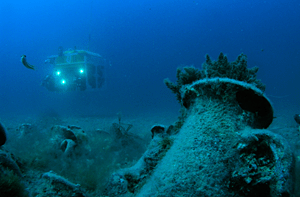
The SeaEye remotely operated vehicle investigates a 1,600-year-old shipwreck that contained amphorae from Tunisia.
(Courtesy RPM Nautical Foundation)

The SeaEye remotely operated vehicle investigates a 1,600-year-old shipwreck that contained amphorae from Tunisia.
(Courtesy RPM Nautical Foundation)
The R/V Hercules is anchored in the Adriatic Sea near Saranda, Albania, and the crew of the 110-foot-long research vessel is at attention. "Back deck, stand clear of the wind!" RPM Nautical Foundation (RPMNF) founder George Robb bellows into a walkie-talkie from his seat in the boat's control room, deep in the belly of the ship. "Winch going out, winch going out!"
Up on deck, two crew members ease the massive, million-dollar SeaEye Panther Plus remotely operated vehicle (ROV) off the stern. With two spindly arms and a boxy frame, the submarine robot resembles a cross between R2-D2 and a construction crane. The SeaEye is about the size and weight of a golf cart, but a single Kevlar cord attached to its protective metal cage holds it up and out over the water. The apparatus breaks the surface of the water, and the boat heaves from the sudden lightening of its load.
Welcome to the Albanian Center for Marine Research
The Albanian Center for Marine Research is a leader in nautical archaeology in the Balkans. Our work is focused on locating and documenting ancient shipwrecks in the Ionian and Adriatic Seas. Our discoveries have attracted international recognition and interest due to the historial value of such truths coming to light.
We thank you for vising our website. Please take a moment to acquaint yourself with our work. We are always adding new content so check back often. We welcome your feedback about our work and website.
Discovering and Preserving our Past



In our efforts to locate, document, and preserve underwater archaeological heritage sites, the Center adheres to the Charter on the Protection and Management of Underwater Cultural Heritage.
Charter on the Protection and Management of Underwater Cultural Heritage
Ratified by the 11th ICOMOS General Assembly, held in Sofia, Bulgaria, from 5-9 October 1996
Introduction:
This Charter is intended to encourage the protection and management of underwater cultural heritage in inland and inshore waters, in shallow seas and in the deep oceans. It focuses on the specific attributes and circumstances of cultural heritage under water and should be understood as a supplement to the ICOMOS Charter for the Protection and Management of Archaeological Heritage, 1990.
The 1990 Charter defines the "archaeological heritage" as that part of the material heritage in respect of which archaeological methods provide primary information, comprising all vestiges of human existence and consisting of places relating to all manifestations of human activity, abandoned structures, and remains of all kinds, together with all the portable cultural material associated with them. For the purposes of this Charter underwater cultural heritage is understood to mean the archaeological heritage which is in, or has been removed from, an underwater environment. It includes submerged sites and structures, wreck-sites and wreckage and their archaeological and natural context.
By its very character the underwater cultural heritage is an international resource. A large part of the underwater cultural heritage is located in an international setting and derives from international trade and communication in which ships and their contents are lost at a distance from their origin or destination.
Archaeology is concerned with environmental conservation; in the language of resource management, underwater cultural heritage is both finite and non-renewable. If underwater cultural heritage is to contribute to our appreciation of the environment in the future, then we have to take individual and collective responsibility in the present for ensuring its continued survival.
Archaeology is a public activity; everybody is entitled to draw upon the past in informing their own lives, and every effort to curtail knowledge of the past is an infringement of personal autonomy. Underwater cultural heritage contributes to the formation of identity and can be important to people's sense of community. If managed sensitively, underwater cultural heritage can play a positive role in the promotion of recreation and tourism.
Archaeology is driven by research, it adds to knowledge of the diversity of human culture through the ages and it provides new and challenging ideas about life in the past. Such knowledge and ideas contribute to understanding life today and, thereby, to anticipating future challenges.
Many marine activities, which are themselves beneficial and desirable, can have unfortunate consequences for underwater cultural heritage if their effects are not foreseen.
Underwater cultural heritage may be threatened by construction work that alters the shore and seabed or alters the flow of current, sediment and pollutants. Underwater cultural heritage may also be threatened by insensitive exploitation of living and non-living resources. Furthermore, inappropriate forms of access and the incremental impact of removing "souvenirs" can have a deleterious effect.
Many of these threats can be removed or substantially reduced by early consultation with archaeologists and by implementing mitigatory projects.
This Charter is intended to assist in bringing a high standard of archaeological expertise to bear on such threats to underwater cultural heritage in a prompt and efficient manner.
Underwater cultural heritage is also threatened by activities that are wholly undesirable because they are intended to profit few at the expense of many. Commercial exploitation of underwater cultural heritage for trade or speculation is fundamentally incompatible with the protection and management of the heritage. This Charter is intended to ensure that all investigations are explicit in their aims, methodology and anticipated results so that the intention of each project is transparent to all.
Article 1 - Fundamental Principles
The preservation of underwater cultural heritage in situ should be considered as a first option.
Public access should be encouraged.
Non-destructive techniques, non-intrusive survey and sampling should be encouraged in preference to excavation.
Investigation must not adversely impact the underwater cultural heritage more than is necessary for the mitigatory or research objectives of the project.
Investigation must avoid unnecessary disturbance of human remains or venerated sites.
Investigation must be accompanied by adequate documentation.
Article 2 - Project Design
Prior to investigation a project must be prepared, taking into account :
• the mitigatory or research objectives of the project;
• the methodology to be used and the techniques to be employed;
• anticipated funding;
• the time-table for completing the project;
• the composition, qualifications, responsibility and experience of the investigating team;
• material conservation
• site management and maintenance
• arrangements for collaboration with museums and other institutions
• documentation
• health and safety
• report preparation
• deposition of archives, including underwater cultural heritage removed during investigation
• dissemination, including public participation
• the mitigatory or research objectives of the project;
• the methodology to be used and the techniques to be employed;
• anticipated funding;
• the time-table for completing the project;
• the composition, qualifications, responsibility and experience of the investigating team;
• material conservation
• site management and maintenance
• arrangements for collaboration with museums and other institutions
• documentation
• health and safety
• report preparation
• deposition of archives, including underwater cultural heritage removed during investigation
• dissemination, including public participation
The project design should be revised and amended as necessary.
Investigation must be carried out in accordance with the project design. The project design should be made available to the archaeological community.
Article 3 - Funding
Adequate funds must be assured in advance of investigation to complete all stages of the project design including conservation, report preparation and dissemination. The project design should include contingency plans that will ensure conservation of underwater cultural heritage and supporting documentation in the event of any interruption in anticipated funding.
Project funding must not require the sale of underwater cultural heritage or the use of any strategy that will cause underwater cultural heritage and supporting documentation to be irretrievably dispersed.
Article 4 - Time-table
Adequate time must be assured in advance of investigation to complete all stages of the project design including conservation, report preparation and dissemination. The project design should include contingency plans that will ensure conservation of underwater cultural heritage and supporting documentation in the event of any interruption in anticipated timings.
Article 5- Research objectives, methodology and techniques
Research objectives and the details of the methodology and techniques to be employed must be set down in the project design. The methodology should accord with the research objectives of the investigation and the techniques employed must be as unintrusive as possible.
Post-fieldwork analysis of artefacts and documentation is integral to all investigation; adequate provision for this analysis must be made in the project design.
Article 6 - Qualifications, responsibility and experience
All persons on the investigating team must be suitably qualified and experienced for their project roles. They must be fully briefed and understand the work required.
All intrusive investigations of underwater cultural heritage will only be undertaken under the direction and control of a named underwater archaeologist with recognised qualifications and experience appropriate to the investigation.
Article 7 - Preliminary investigation
All intrusive investigations of underwater cultural heritage must be preceded and informed by a site assessment that evaluates the vulnerability, significance and potential of the site.
The site assessment must encompass background studies of available historical and archaeological evidence, the archaeological and environmental characteristics of the site and the consequences of the intrusion for the long term stability of the area affected by investigations.
Article 8 - Documentation
All investigation must be thoroughly documented in accordance with current professional standards of archaeological documentation.
Documentation must provide a comprehensive record of the site, which includes the provenance of underwater cultural heritage moved or removed in the course of investigation, field notes, plans and drawings, photographs and records in other media.
Article 9 - Material conservation
The material conservation programme must provide for treatment of archaeological remains during investigation, in transit and in the long term.
Material conservation must be carried out in accordance with current professional standards.
Article 10 - Site management and maintenance
A programme of site management must be prepared, detailing measures for protecting and managing in situ underwater cultural heritage in the course of an upon termination of fieldwork. The programme should include public information, reasonable provision for site stabilisation, monitoring and protection against interference. Public access to in situ underwater cultural heritage should be promoted, except where access is incompatible with protection and management.
Article 11 - Health and safety
The health and safety of the investigating team and third parties is paramount. All persons on the investigating team must work according to a safety policy that satisfies relevant statutory and professional requirements and is set out in the project design.
Article 12 - Reporting
Interim reports should be made available according to a time-table set out in the project design, and deposited in relevant public records.
Reports should include:
• an account of the objectives
• an account of the methodology and techniques employed
• an account of the results achieved
• recommendations concerning future research, site management and curation of underwater cultural heritage removed during the investigation
• an account of the objectives
• an account of the methodology and techniques employed
• an account of the results achieved
• recommendations concerning future research, site management and curation of underwater cultural heritage removed during the investigation
Article 13 - Curation
The project archive, which includes underwater cultural heritage removed during investigation and a copy of all supporting documentation, must be deposited in an institution that can provide for public access and permanent curation of the archive. Arrangements for deposition of the archive should be agreed before investigation commences, and should be set out in the project design. The archive should be prepared in accordance with current professional standards.
The scientific integrity of the project archive must be assured; deposition in a number of institutions must not preclude reassembly to allow further research. Underwater cultural heritage is not to be traded as items of commercial value.
Article 14 - Dissemination
Public awareness of the results of investigations and the significance of underwater cultural heritage should be promoted through popular presentation in a range of media. Access to such presentations by a wide audience should not be prejudiced by high charges.
Co-operation with local communities and groups is to be encouraged, as is co-operation with communities and groups that are particularly associated with the underwater cultural heritage concerned. It is desirable that investigations proceed with the consent and endorsement of such communities and groups.
The investigation team will seek to involve communities and interest groups in investigations to the extent that such involvement is compatible with protection and management. Where practical, the investigation team should provide opportunities for the public to develop archaeological skills through training and education.
Collaboration with museums and other institutions is to be encouraged. Provision for visits, research and reports by collaborating institutions should be made in advance of investigation.
A final synthesis of the investigation must be made available as soon as possible, having regard to the complexity of the research, and deposited in relevant public records.
Article 15 - International co-operation
International co-operation is essential for protection and management of underwater cultural heritage and should be promoted in the interests of high standards of investigation and research. International co-operation should be encouraged in order to make effective use of archaeologists and other professionals who are specialised in investigations of underwater cultural heritage. Programmes for exchange of professionals should be considered as a means of disseminating best practice.
Illyrian Coastal Exploration Program
 Recognizing a need to bring together researchers, academic and non-profit organizations, and governmental agencies, the Illyrian Coastal Exploration Program (ICEP) was conceptualized and created by RPM Nautical FoundationArchaeological Director, Dr. Jeffrey Royal. The mission of the program is to put together a comprehensive plan for discovering, documenting, and protecting the cultural material record in this entire region.
Recognizing a need to bring together researchers, academic and non-profit organizations, and governmental agencies, the Illyrian Coastal Exploration Program (ICEP) was conceptualized and created by RPM Nautical FoundationArchaeological Director, Dr. Jeffrey Royal. The mission of the program is to put together a comprehensive plan for discovering, documenting, and protecting the cultural material record in this entire region.
This region rose to economic and political dominance in the 5th century BCE and includes the modern lands of Albania, Montenegro, and southern Croatia. Since 2006, numerous sites of maritime significance have been discovered by RPM Nautical Foundation off the ancient Illyrian coastline.
Despite political boundaries, this program is a collaborative effort between many governmental and research agencies as well as individuals from academic organizations:
• RPM Nautical Foundation• The Albanian Center for Marine Research• The Albanian Ministry of Culture
• The Albanian Institute of Archaeology
• The Albanian Ministry of Defense
• The Montenegro Ministry of Culture-Sport-Media
• The Montenegran Regional De-Mining Center
• The Regional Institute for Cultural Heritage
• The Institute of Nautical Archaeology
• University of Washington/Friday Harbor Laboratory
• East Carolina University• Transylvania University
• The Albanian Institute of Archaeology
• The Albanian Ministry of Defense
• The Montenegro Ministry of Culture-Sport-Media
• The Montenegran Regional De-Mining Center
• The Regional Institute for Cultural Heritage
• The Institute of Nautical Archaeology
• University of Washington/Friday Harbor Laboratory
• East Carolina University• Transylvania University
The Blue Eye: 2012 Expedition
The Albanian Center for Marine Research is a leader in nautical archaeology in the Balkans. Our work is focused on locating and documenting ancient shipwrecks in the Ionian and Adriatic Seas. Our discoveries have attracted international recognition and interest due to the historial value of such truths coming to light.
We thank you for vising our website. Please take a moment to acquaint yourself with our work. We are always adding new content so check back often. We welcome your feedback about our work and website.
The Blue Eye: 2012 Expedition
The 2012 Blue Eye Expedition will mark the second year of survey in the famous Albanian spring. Last season, the Center’s team conducted a feasibility survey and determined it is possible to conduct scientific diving in remote high flow underwater caves . The Blue Eye is a major feature in the landscape and oral histories dating back centuries tell stories of ritual sacrifice in the spring. Divers determined that a ledge at twenty meters acts as a catchment area for material deposited from the surface. Artifacts from several periods were found scattered along the ledge, indicating ritual use over several centuries. The upcoming field season will build on last season’s observations with help from the Center’s underwater field school, Titan Dive Gear, and media company Top Channel.
The underwater field school runs for three weeks from July 2-22 and is staffed by international specialists from Albania, Montenegro, Serbia, United States, and Denmark. The course is accredited by the American institution Transylvania University and trains graduate students from the Balkans and international universities in the underwater sciences. Students will take a break from the coastal survey to head inland and visit the Blue Eye, where they will learn about the many site types found in the field of underwater archaeology including submerged caves. The students will help provide surface support and documentation of the culturally rich area. Afterwards, they will have time to relax and enjoy the beautiful environs.
Titan Dive Gear (a leader in closed circuit rebreathers and dive lights) is sponsoring the Center’s research through equipment donation and providing an experienced cave diving videographer to document the research. High definition video will follow the team to the twenty-meter ledge and help document artifacts exposed as part of the non-invasive survey.
The expedition will also be documented by Top Channel, the leading technological media channel in Albania. High definition footage from outside and inside the spring will be broadcast as part of a documentary. The Top Channel documentary, available in Albanian and English, will provide the public with an intimate view of this beautiful and powerful cave as scientists battle the strong flow to bring the secrets of the Blue Eye to light for the first time.
The underwater field school runs for three weeks from July 2-22 and is staffed by international specialists from Albania, Montenegro, Serbia, United States, and Denmark. The course is accredited by the American institution Transylvania University and trains graduate students from the Balkans and international universities in the underwater sciences. Students will take a break from the coastal survey to head inland and visit the Blue Eye, where they will learn about the many site types found in the field of underwater archaeology including submerged caves. The students will help provide surface support and documentation of the culturally rich area. Afterwards, they will have time to relax and enjoy the beautiful environs.
Titan Dive Gear (a leader in closed circuit rebreathers and dive lights) is sponsoring the Center’s research through equipment donation and providing an experienced cave diving videographer to document the research. High definition video will follow the team to the twenty-meter ledge and help document artifacts exposed as part of the non-invasive survey.
The expedition will also be documented by Top Channel, the leading technological media channel in Albania. High definition footage from outside and inside the spring will be broadcast as part of a documentary. The Top Channel documentary, available in Albanian and English, will provide the public with an intimate view of this beautiful and powerful cave as scientists battle the strong flow to bring the secrets of the Blue Eye to light for the first time.
2012 Expedition Partners:
Ksamil Bay Artificial Reef Project: Cruiser 1, Torpedo 1-2
Late last year (2010), five de-commisioned Albanian Navy vessels were towed out from nearby Baza Saranda to Ksamil Bay and sunk as a seminal artificial reef project on the coastline. There are two 38 m cruisers, two 18 m torpedo boats, and a 17 m patrol boat in water depths ranging from 15 msw to 33 msw. We are currently documenting the succession of the biological communities associated with these wrecks.
This video shows the full length of one of the cruisers. Footage by Derek Smith/RPM Nautical Foundation.
Late last year (2010), five de-commisioned Albanian Navy vessels were towed out from nearby Baza Saranda to Ksamil Bay and sunk as a seminal artificial reef project on the coastline. There are two 38 m cruisers, two 18 m torpedo boats, and a 17 m patrol boat in water depths ranging from 15 msw to 33 msw. We are currently documenting the succession of the biological communities associated with these wrecks.
This video shows the full length of one of the torpedo boats. Footage by Derek Smith/RPM Nautical Foundation.
25 febbraio 2013
Aventurë dhe terapi me…rafting ne Shqiperi.... jeni gati per aventuren e rralles beje pjese te 2013
e Hënë, 25 Shkurt, 2013 | 14:53 pm
Nga kanioni i “xhindeve dhe mostrave” të Skraparit te “Porta e djallit”… Duken si subjekte librash fantastiko-shkencorë, por në fakt ato janë “disnayland”-et e natyrës shqiptare. Përmes sportit të rafting, juristja pranë Ministrisë së Brendshme ka mundur t’i zbulojë një nga një, me pritshmëritë të destinacioneve të reja.
Në fillim e quajtën “të krisur”…, pasi iu bashkua grupit të disa djemve beratas, të hipur mbi një gomone gati për të ndalur frymën mes bukurive natyrore të kanioneve të lumit Osum. Shijoi një eksperiencë krejt ndryshe, të mbushur me energji, rrahje të forta zemre dhe adrenalinë që i përshkonte çdo qelizë të trupit. Thotë se sporti i rafting është një “drogë” natyrale, pa kurrfarë efektesh anësore, por që të çon drejt një bote të re, plot sfida dhe të panjohura. Blerina Ago, 25-vjeçarja në profesion juriste pranë Ministrisë së Brendshme, nuk di të ndalet së foluri, sidomos kur vjen puna për pasionin e çmendur, për rafting. Përtej dukjes protokollare në ambientet e zyrës, ajo është një vajzë që sfidon vështirësitë, nuk u trembet edhe rreziqeve rastësore kur gomonia mund të rrëzohet e ta vërë përfund. Sipari i bukurive natyrore nga lumenjtë e Shqipërisë, te kanionet e mbushura me gjelbërim të përhershëm, nuk janë vetëm argëtimi parësor i juristes. Në statusin e sekretares së Përgjithshme të Federatës Shqiptare të rafting, ajo ka marrë përsipër edhe promovimin e turizmit natyror në vendin tonë, përmes këtij sporti specifik që ajo e praktikon prej 12 vitesh.
 Blerina, çfarë u bë shtysë që të përfshiheshit në sportin e rafting?
Blerina, çfarë u bë shtysë që të përfshiheshit në sportin e rafting?Nuk e di nëse ishte një kokëkrisje adoleshenteje apo një formë për t’u larguar nga përditshmëria e jetës sime në Berat. Madje, si pjesa më e madhe e njerëzve, mendoja se djemtë e rafting ishin tepër të çmendur, që shkonin nëpër ato zona aq të thella dhe se si flisnin me kaq ëndje për një vend të harruar. Njeriu të paktën një herë në vit duhet të shkojë diku ku s’ka qenë më parë dhe për mua ishte viti 2001 ai që më prezantoi për të parën herë me kanionet e Skraparit. Isha 14 vjeç, kur kuptova se “Lumi është jetë”. Kështu, një të diel u gjenda në breg të lumit Osum, në Hambull të Skraparit. U ndjeva e pushtuar nga frika dhe kurioziteti për të zbuluar atë që është e fshehur në kanionin e “xhindeve dhe mostrave”, ashtu si përflitej në legjendat urbane për kanionet e famshme të Skraparit. Kur kam veshur kostumin neopren të rafting dhe zbrita në kanionet e Osumit, fillova të ndihesha ndryshe. Jo për shkak të pamjes sime të çuditshme, por të sfidës me të cilën u ndesha. Isha përgatitur për të filluar një eksplorim, gjatë të cilit nuk kisha mundësi të kthehesha prapa, duhet të vazhdoja deri në fund të udhëtimit, por pas sekondave të para në gomone nuk mendova më për këtë. Lumi më rrëmbeu aq shumë, pavarësisht dhimbjeve të muskujve. Kjo lloj aventure më bën të shoh mbrapa. Edhe tani, pas shumë viteve, gjithmonë ndiej të njëjtat rrahje zemre, të njëjtën dozë adrenaline në damar. Të gjitha këto e bëjnë përfundimisht të paharruar aventurën time të parë të rafting, që shumë shpejt u kthye në argëtimin parësor për mua.
Si pa kuptuar, kanë kaluar 12 vite qysh atëherë e sot jeni në statusin e sekretares së Përgjithshme të Federatës Shqiptare të rafting, a ka interes për këtë lloj sporti?
Në Shqipëri, pesë vitet e fundit vihet re një interesim shumë i madh nga turistët vendës dhe ata të huaj. Pa dyshim është dashur një punë e madhe dhe promovuese gjatë gjithë këtyre viteve.
Më kujtohet vite më parë një moment kur bashkëshortja e një ambasadori në atë kohë në Shqipëri gjunjëzohet para ujëvarës së artë në kanionin e Skraparit dhe fillon falet në rusisht. I shkoj pranë dhe pyes se çfarë po ndodhte dhe ajo më përgjigjet: “Falënderoj Zotin që më fali edhe një ditë që unë të vija në këtë kanion dhe të përjetoja këtë bukuri”. Qëllimi i veprimtarisë së Federatës Shqiptare të Rafting shtrihet në dy drejtime kryesore: zhvillimi i këtij sporti në Shqipëri në bazë të standardeve ndërkombëtare dhe të respektimit dhe mbrojtjes së natyrës. Promovimi i udhëtimeve të ndryshme rafting, në sferën e turizmit kombëtar dhe ndërkombëtar. Këto udhëtime turistike shiten në paketa turistike nga operatorë të ndryshëm, vetëm nëpërmjet shërbimeve të specializuara të guidave profesionale të FSHR-së.
 A nuk duket si një sport i rrezikshëm për një femër?
A nuk duket si një sport i rrezikshëm për një femër?Nuk mendoj se ka kufizime gjinore apo fizike për të ushtruar çfarëdolloj sporti që praktikohet në botë. Fakti që disa sporte janë më të praktikuara nga femrat, mendoj se ka të bëjë me natyrën e femrave, të cilat janë në kërkim të së bukurës. Rafting është i bukur. Ka shumë vajza dhe gra, të cilat e praktikojnë rafting në Shqipëri. Madje, ato janë shumë të zonjat, shumë luftarake dhe drejtuese shumë të mira. Rafting nuk është një sport që kërkon thjesht forcë fizike. Paralelisht kërkon një fuqi mendore dhe femrat dinë t’i kombinojnë shumë bukur të dyja këto. Nuk është një sport i rrezikshëm. Çdo person duhet ta ushtrojë rafting nën shoqërimin e një guide profesionale të Federatës Shqiptare të Rafting dhe pranë një kompanie/organizate që zotëron të gjitha pajisjet e rafting.
A e keni parë veten ndonjëherë në vështirësi?
Personalisht jam vënë në vështirësi gjatë momenteve të stërvitjes me anëtarët e tjerë të skuadrës. Qëllimisht ata përmbysën gomonen dhe unë gjendesha e ngecur poshtë gomones, me rrëmbesën e lumit që më shtynte drejt shkëmbit vazhdimisht. Normalisht, ndodh që ty të duket sikur je nën ujë për një jetë të tërë, por në fakt ato janë vetëm pak sekonda. Por gomonia që kisha sipër, e pengonte jelekun e shpëtimit të më nxirrte në sipërfaqe. Në mënyrë instinktive nisa të kontrolloj me dorë sipërfaqen e gomones, derisa gjeta hapësirën, kapa litarin dhe dola sipër. Kaq ishte, një tjetër sfidë, asgjë me tepër. Ia dola mbanë vetë në këtë ushtrim dhe djemve të skuadrës që ishin në gatishmëri ia kurseva lëshimin e litarit dhe teknikës se hedhjes për shpëtim.
Përveç faktit që është një lloj aventure dhe zbulimi, pse duhet aplikuar ky lloj sporti?
Ky sport në radhë të parë është shumë edukues, nxit frymën në grup dhe të mëson se gjithmonë duhet të synosh një finish. Për ta arritur këtë duhet të jesh i aftë të kalosh gomonet e tjera para teje, vetëm në sajë të punës me skuadrat e tjera. Dhe nëse je i zoti për ta arritur këtë, atëherë ti ke një kufi të ri. Prandaj ne i nxisim prindërit dhe fëmijët e tyre të vijnë ta praktikojnë. Gjithashtu jemi duke bashkëpunuar me disa shkolla fillore, të mesme dhe të larta që të organizojmë rafting në itinerarin e luginës Osum. Në shumë shtete të Europës ky sport është i përfshirë në orën e “Edukimit fizik”. Synojmë ta arrijmë këtë dhe në mjediset tona të arsimit. Praktikimi i këtij lloj sporti është një terapi e vërtetë, sidomos për personat që ndihen të lodhur, të stresuar, të mërzitur dhe pa shpëtim nga monotonia e punës dhe përditshmërisë së tyre. Ne e kemi të provuar se për të paktën tri orë ata nuk do mendojnë asgjë nga shqetësimet e tyre dhe vetëm do çlirohen nga emocionet negative dhe do mbushen plot me energji. Rafting është një drogë natyrale. Të qetëson dhe të ndihmon në mënyrë të shëndetshme. Një terapi në kuptimin e plotë të fjalës.
Çdokush do mendojë se ju jeni një sportiste profesioniste, megjithatë profesioni juaj është juriste…
Në profesion jam juriste pranë Ministrisë së Brendshme, Instituti i Trajnimit të Administratës Publike. Por, me gjithë angazhimin dhe seriozitetin me të cilat bëj punën, jam sakaq aktive në kohën time të lirë. Më pëlqen t’i shërbej mjedisit ku jetoj. Punoj vullnetare kryesisht për sa u përket çështjeve të turizmit dhe mjedisit. Jam gjithmonë në luftë të vazhdueshme me kohën. Megjithatë, suksesi është gjetja e ekuilibrit. Gjithkush që ndjek një pasion, ëndërr, projekt duke dhënë dhe marrë, ndihet mirë, i dobishëm dhe produktiv. I tillë është edhe sporti i rafting për mua.
ERMIRA ISUFAJ
Burimi: http://www.panorama.com.al/2013/02/25/blerina-ago-aventure-dhe-terapi-me-rafting/#ixzz2LwLI0I6C
"Eksploruesit" eshte nje grup i apasionuar pas sportit te speleologjise dhe alpinizmit.
Shpella e Mirë---- http://eksploruesit.org/
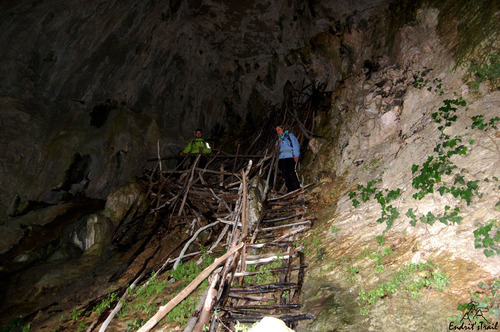
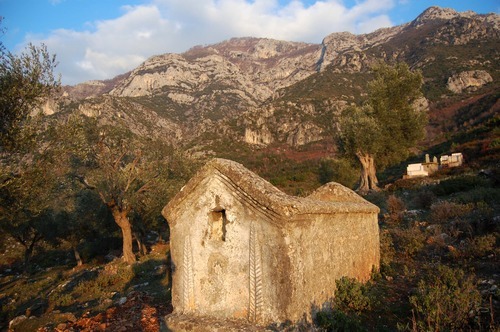
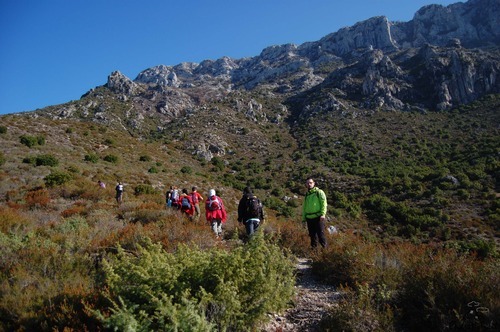
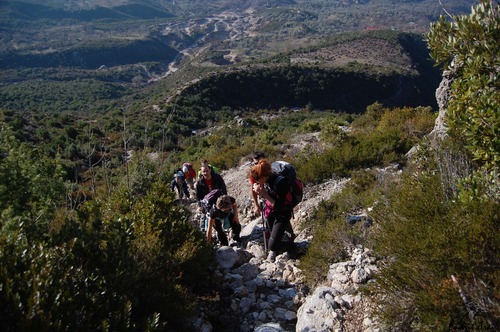
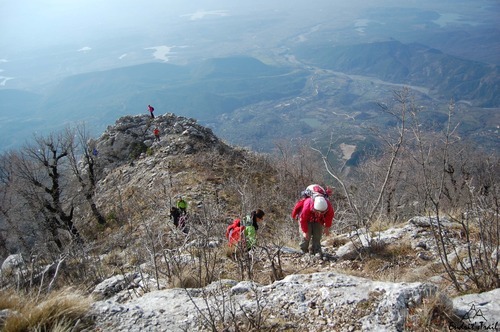
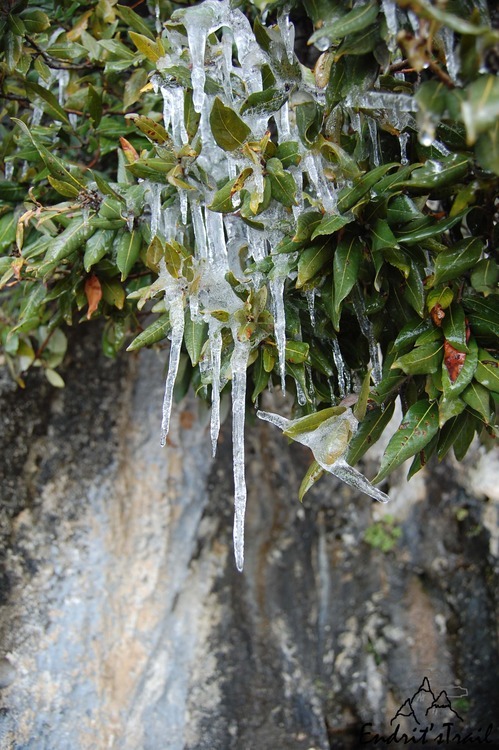
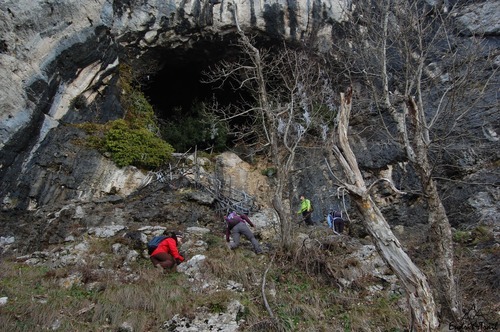
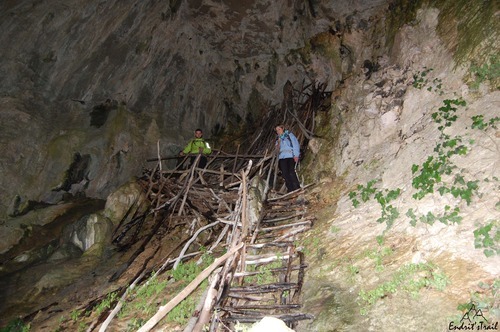
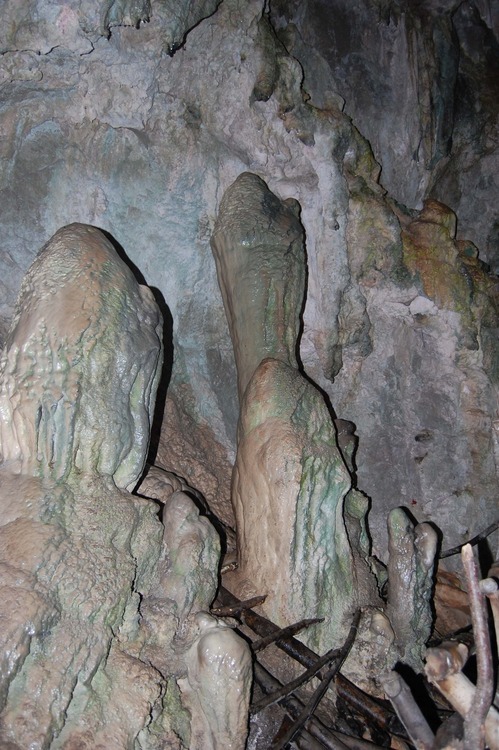

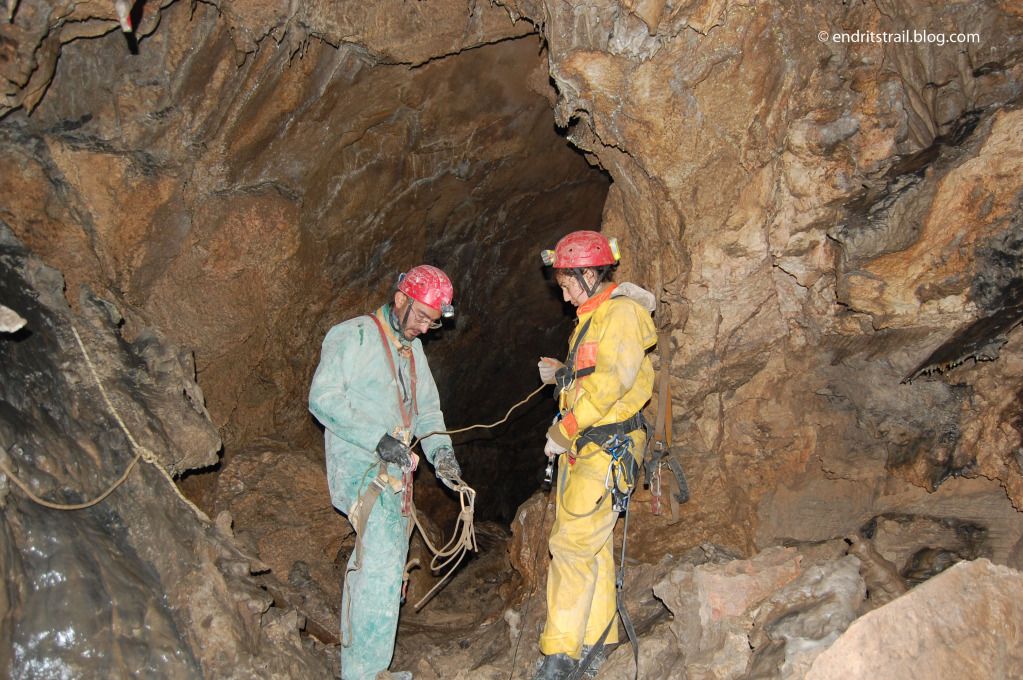
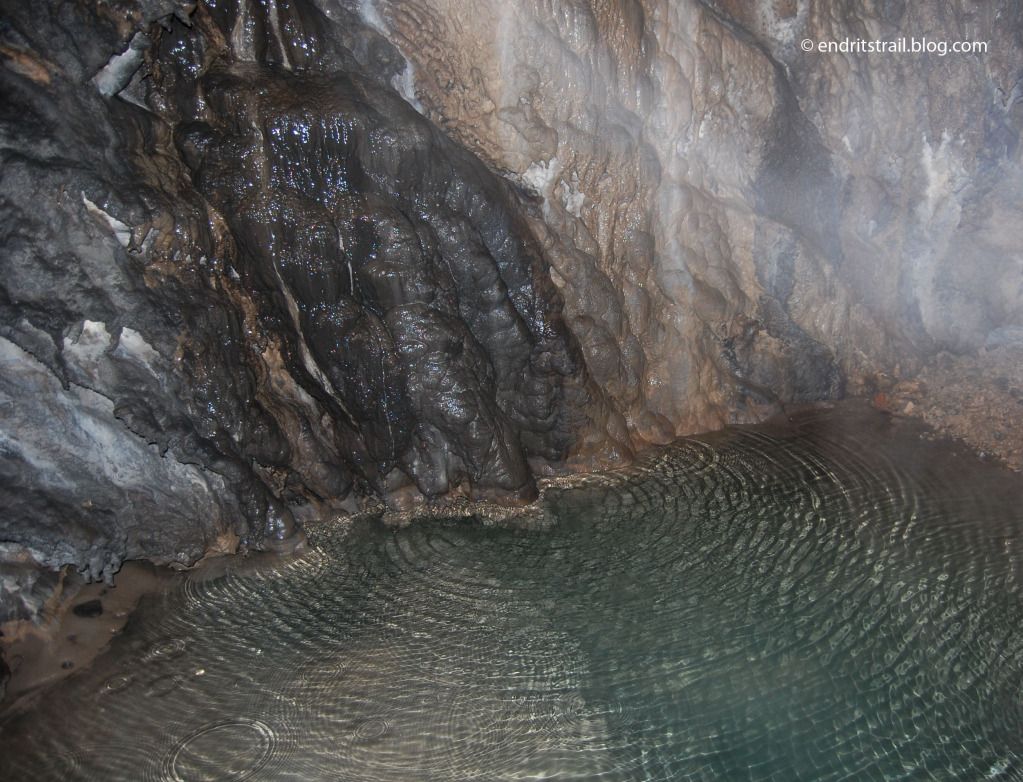
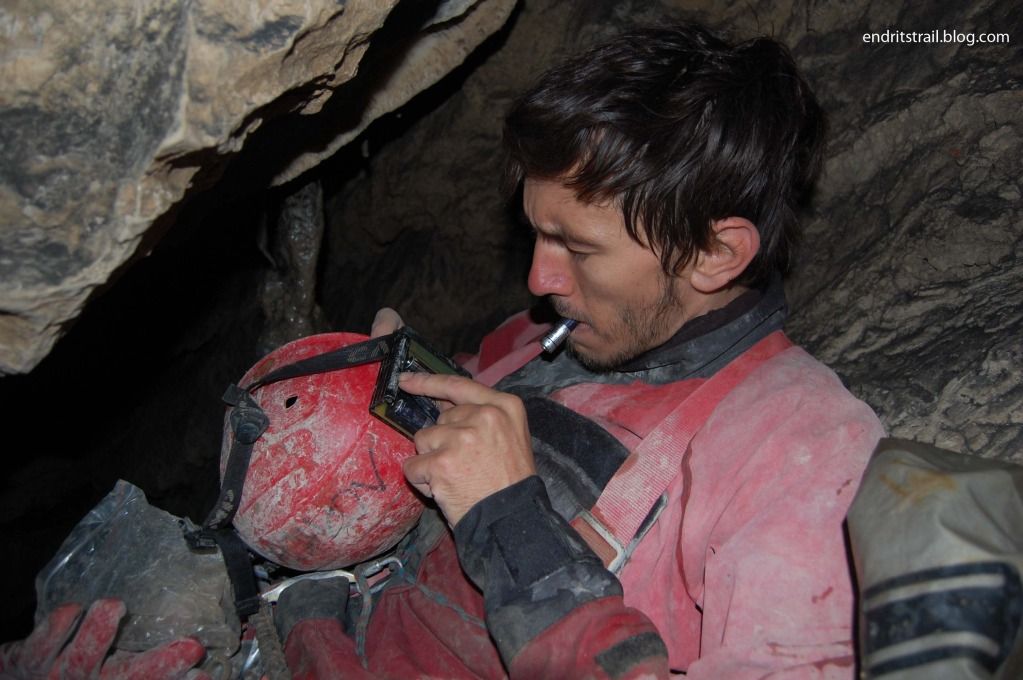
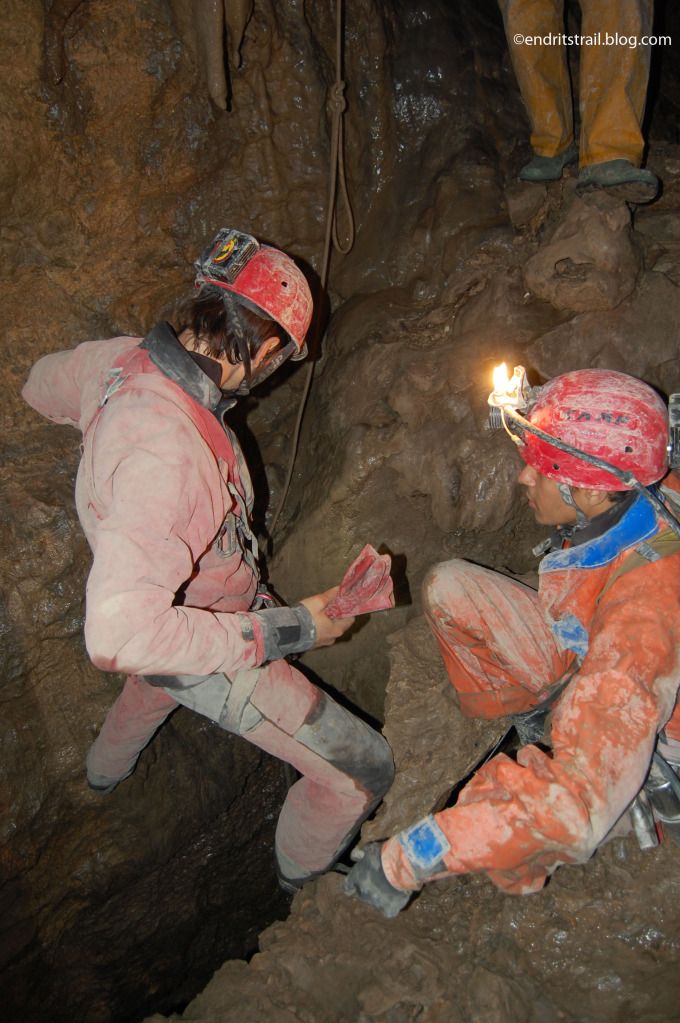
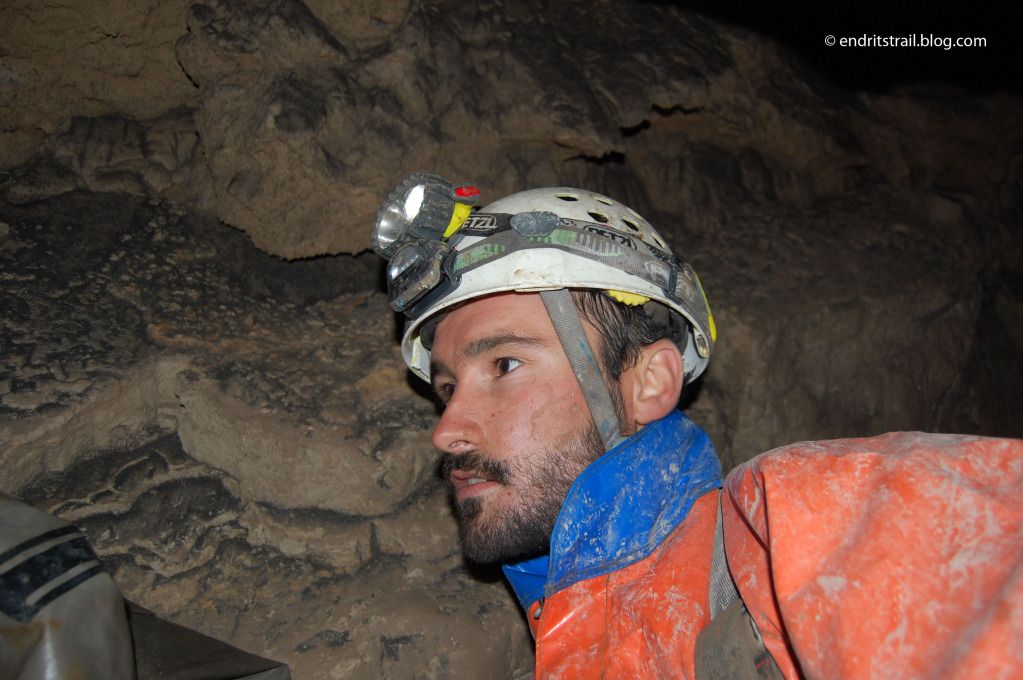
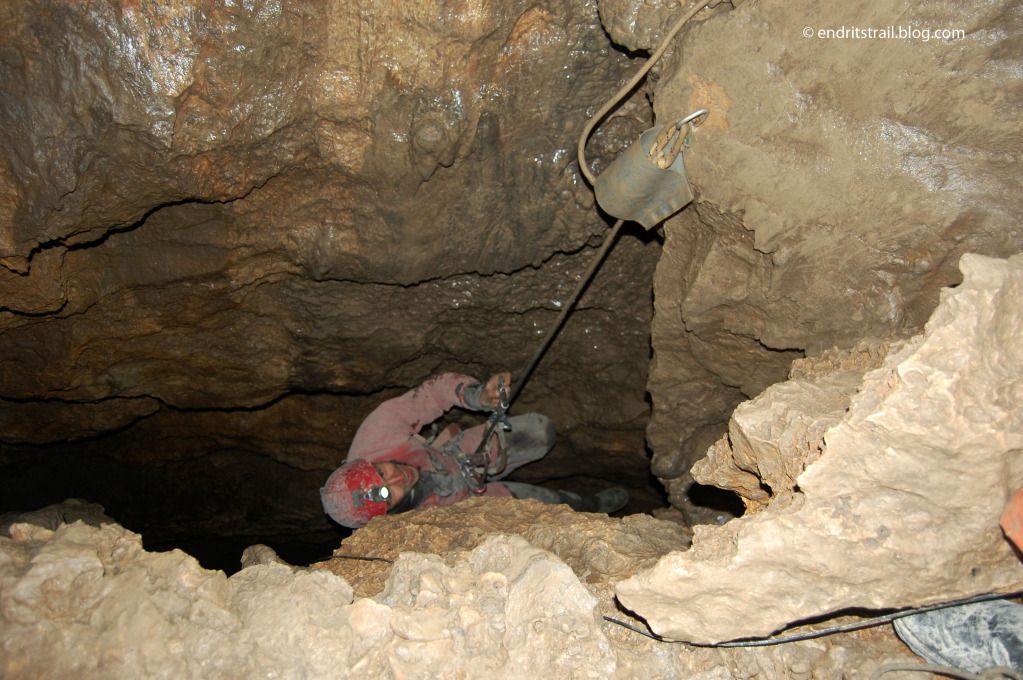

Grupi Eksploruesit, ditën e dielë, dt. 27/01/2013, udhëtoi drejt Shpellës së Mirë.
Shpella e Mirë ndodhet në fshatin Kurçaj, Fushkruje dhe është vend pelegrinazhi çdo 6 maj. Ajo vizitohet nga banorët e zonës në këtë datë cdo viti.
Shpella e Mirë ndodhet në fshatin Kurçaj, Fushkruje dhe është vend pelegrinazhi çdo 6 maj. Ajo vizitohet nga banorët e zonës në këtë datë cdo viti.
Përveç kësaj shpelle, fshati Kurçaj ofron një mori bukurish përreth, si ullinjtë qindra vjeçar, mbetjet e disa varreve bizantine, pema gjigande pranë burimit, si dhe malin e Gamitit.
Të gjithë këto element e shndërrojnë këtë fshat në një pikë tërheqëse për të apasionuarit e alpinizmit dhe historisë. Një fshat ende i pazbuluar dhe që pikerisht për këto ja vlen të vizitohet.









Tekst: Amantia Simixhiu
Foto: Endrit Shima
Rreth nesh
Klubi Speleo-Alpin EKSPLORUESIT është një organizatë jo fitimprurëse informale që mbledh pranë saj një grup të apasionuar pas speleologjisë, alpinizmint dhe aktiviteteve në natyrë.
Organizata jonë ka për qëllim të zhvilloj speleologjinë dhe turizmin aktiv e të qendrueshëm si edhe mbrojtjen e zonave malore e karstike.
Aktivitetet në natyrë zhvillohen në fundjavë, ndërsa takimet mes antarëve zhvillohen një herë në dy javë.
ANTARËSIMI
Të gjithë të apasionuarit pas speleologjisë dhe alpinizmit janë të mirëpritur në klubin tonë.
Ne organizojmë mesatarisht 2 aktivitete në muaj (ngjitje në mal, speleologji, ski, etj.) si edhe ekspedita speleologjike dhe alpinistike cdo vit.
Kuota për antarësim është 2000 Lek në vit dhe do të përdoret për blerjen e paisjeve kolektive ose për shpenzime të tjera të klubit.
Kontaktoni me ne për më shumë informacion rreth antarësimit.
Shënim: Klubi nuk mban përgjegjësi për aksidentet që mund t’i ndodhin antarëve gjatë aktiviteteve. Personat nën 18 vjeç duhet të kenë deklaratë nga prindi për t’u antarësuar ose të shoqërohen nga një i rritur gjatë aktiviteteve në natyrë.
kspedita e Shpelles se Arapit, 2012

Në korrik të vitit 2011, antar të grupit tonë morrën pjesë në ekspeditën speleologjike të Shpellës së Arapit, në Alpet e Shqipërisë, Theth, Shkodër.
Me shume mund te gjeni tek faqja zyrtare e Ekspedites Arapit Expedition.





Kontakt
Ju lutem na kontaktoni në info@eksploruesit.org ose duke përdorur formën e mëposhtëme. Një person nga grupi Eksploruesit do ju kthej përgjigje sa më shpejt të jetë e mundur.https://www.facebook.com/eksploruesit
Tour Hiking & Skiing 2-3 mars/2013 ne Puke me Eksploruesit - "Albania Beauty"
HIKING
& SKIING
2 – 3
mars në qytetin e Pukës
Qyteti i
Pukës është kryeqendra e rrethit të Pukës në Shqipërinë e veriut. Në 835 metra
mbi nivelin e detit, qyteti është një nga zonat më të lartat në lartësi në
Shqipëri dhe përbën një zonë të njohur për ski. I ndodhur 140 km larg Tiranës
(rreth 2 orë e 30 minuta me makinë). Gjurmët e para të qytetit gjenden që në
lashtësi me emrin Picarea, gjatë shekullit VI – II PK, i cili me vonë u shkatërrua
nga një pushtim barbar. Qyteti ka qenë i njhohur edhe me emrin Pezhve më vonë
dhe ka një traditë gati 2'000 vjeçare në skulpturat rrëshirë. Mbetjet e kësaj
tradite janë te vendosura në ¼ e qytetit dhe gjithashtu qyteti është i rrethuar
nga një pyll përrallor pishe prej një sipërfaqe 400 hektar, një faktor ky që e
shndërron këtë zonë në perlë te hiking ku pamjet që të ofrohen janë mahnitëse. I
ndodhur në kurriz të Bjeshkëve të Nemuna, ky vend ka qenë edhe mikpritës i
kolosit të letrave shqiptare Migjeni, ku shkolla ku ai dhënë mësim është
shndërruar në një atraksion turistik. Me pakë fjalë qyteti verior është një fole
e turzimsit kulturor, gastronomik (ku kulinaria tradicionale do të ndihet në
çdo vakt) dhe adventuresk – ku hiking nëpër borë dhe ski do të jenë kryefjala e
qëndrimit tonë 2 ditor në Pukë.
..........G u i d a !...........
Data 2 mars
:
· Nisja bëhet në orën 8:00 tek sheshi “Nënë Tereza”, ku
pasi të udhëtojmë për 2 orë do të bëjmë një ndalesë buze liqenit te Vau Dejes.
Në restorant Perla, do të kemi mëngjesin dhe kafet për ti nxjerë gjumin ndonjë
gjumashi :P
· Rreth 11:30 mbërrijmë në qytetin e Pukës ku pasi të sistemohemi
nëpër dhoma, zgjedhim pajiset e skive dhe zbresim ne fushën 2 minuta larg hanit
për të marë leksionet e para te skive (si frenimi dhe marje e kthesave).
· Në orën 14:30 do të drekojmë me kulinari tradicionale të
zonës.
· Në
orën 16:00 do të shtrojmë disa opsione:
a) Për
të apasionuarit për ski do mund të zbresim përsëri për ski
b) Kurse
për të apasionuarit për hiking do të zhvillojmë një guidë te veçantë nëpër dëborë
me pamjet e rralla panorameske
· Për
mbasditen kemi menduar një shëtitje turistike në qytet dhe gjithashtu zhvllimin e disa “social gamea”
te quajtur ndryshe “energizers”
· Në
orën 21:00 do të kemi darkën duke respektuar traditen gastronomike te vendit
(me mish keci, fli, çorbë me ajk qumshti dhe miell misri, etj etj).
· Pas
darka do të jetë si një party tek Check Point :P, me pije alkolike dhe
joalkolike dhe ku i vetmi ndriçim i hollit do të jetë drita e oxhakut. Për
muziken? Pa merakt, DJ dhe pajiset i kemi me vete :D. Mbrëmja do të vazhdojë
deri sa “I fundit i Mohikanve” të jetë zgjuar J
Data
3 mars:
· Për
të mos iu prishur gjumin e mëngjesit :D, në orën 10:00 do të kemi mëngjesin dhe
ku pas kafes për gjumashet :P, do të marin pajiset e skive por kësaj radhe do të
spostohemi në një pistë tjeëter (15 – 20 minuta larg), për të provuar nëse ka
ndonjë talent te pazbuluar skiator midis nesh.
· Në
orë 14:00 do të kemi drekën.
· Pasi
të përshëndetemi me qytetin, në orën 15:00 do të bëhet nisja për në Tiranë.
· Në
orën 18:00 mbërrijmë në Tiranë, të dashuruar për gjumë por të mbushur me
kujtime te paharueshme J
Ju
njoftojmë që për të patur kohën e mjaftueshme në dispozicion për parapërgatitjet,
rezervimet do të mbyllen diten e premte në orën 12:00.
Ju
presim të kalojmë një fundjavë të veçantë së bashku J
P.S nga
një trip i mëpërparshëm (e theksojmë jo i joni) për t’iu krijuar një ide se
cfarë argëtimi na pret këtë fundjavë :D. Ne vidion tonë do e publikojmë të
hënën me ju aktorët kryesor J
Për më tepër informacion mund të na ndiqni në fan-page tonë në facebook.
Për më tepër informacion mund të na ndiqni në fan-page tonë në facebook.
Rezervimet
si gjithmonë mund të bëhen në:
C:
0693771019
F:
eskploruesit – albanian beauty.facebook.com
Iscriviti a:
Post (Atom)

















